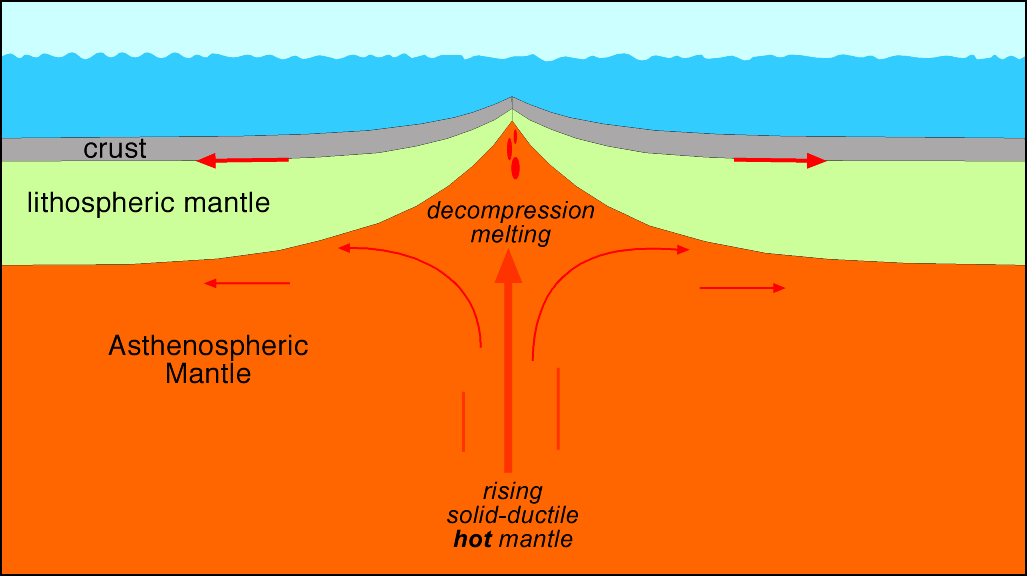
At Midocean Ridges:
1) plates spread apart
Tensional (stretching) stresses are apparent at the midocean ridges because the newly forming ocean crust is broken by a series of normal faults. Normal faults occur where the crust is being stretched. So the crust is being pulled apart at the midocean ridges (not forced apart).
2) new crust forms
Stretching causes thinning of the crust. This allows deeper, hotter mantle rocks to rise up and approach the surface. These rocks are hot enough that they would melt if they were at the Earth's surface, but the great pressure from the weight of overlying rock prevents the rocks from changing from the solid to the liquid state. But as these hot mantle rocks rise, the pressure decreases (less mass overhead) to the point where they are able to partially melt. This is called decompression melting. The basaltic magma thus formed, slowly migrates toward the surface and intrudes into fractures forming at the midocean ridge. Some of the magma cools and crystallizes beneath the surface forming coarse-grained intrusive rocks. Some injects into fractures in the crust that constantly form as the crust is continuously stretching. Some of it crystallizes in the fractures to form fine-grained dikes. Some of the magma passes upward through the fractures to form sheet flows and pillow lavas on the seafloor. The thickness of the oceanic crust is nearly constant at around 7 km except right at the ridge where it is forming. In contrast, the lithosphere is very thin at the ridge, not much thicker than the crust itself.
Also, newly formed lithosphere is hot and buoyant
At the ridge, new crust forms by igneous intrusion and extrusion. It is obviously hot. The mantle beneath the ridge is also hotter than the surrounding mantle because it is rising up from deeper depths (where temperatures are higher) to replace the spreading crust/lithosphere. So the entire crust/lithosphere/asthenosphere beneath the midocean ridge is hotter than the cooling lithosphere and "normal-temperature" mantle at distance away from the ridge. Since hot rocks are in a more expanded state and then contract as they cool (as they spread away from the ridge), the midocean ridges stand up high above the surrounding seafloor. The seafloor depth increases with distance away from the midocean ridges. The midocean ridges lie about 2.5 km below sea level. The depths increase quickly at first and then more gradually to 4 km to 5 km to 6 km below sea level.
